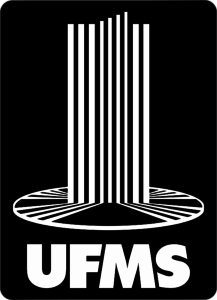Use este identificador para citar ou linkar para este item:
https://repositorio.ufms.br/handle/123456789/5259| Tipo: | Artigo de Periódico |
| Título: | Metal complexes as antibacterial agents: Synthesis, characterization and antibacterial activity of some 3d metal complexes of sulphadimidine |
| Autor(es): | Tella, Adedibu Clement Obaleye, Joshua Ayoola |
| Abstract: | Metal complexes of Sulphadimidine(SAD) were synthesized.The complexes were formulated as [Co(SAD)2Cl2], [Cu(SAD)2 (H2O)2], [Ni (SAD)2 Cl2 H2O], [Cd (SAD)2 Br2], [Fe (SAD)3](H2O)3 and [Mn (SAD)2Cl2] characterized by elemental Analysis, conductivity, IR , UV-Vis, Magnet moment and 1H-NMR and Mass spectroscopies. Co(II), Mn (II), and Ni(II) sulphadimidine complexes consist of metal ion which coordinates through amino nitrogen of the terminal NH2 group and oxygen of sulfonamidic group of the two molecules of sulphadimidine ligand and two halide ions to form octahedral structure while Cd(II) coordinates with sulphadimidine through amino nitrogen of the terminal NH2 group with two bromine ions to complete tetrahedral structure. In Cu(II) sulphadimidine complex, copper ion coordinates through both pyrimidinic nitrogen (heterocyclic nitrogen) and sulfonamidic nitrogen of the two molecules of sulphadimidine. Fe(III) coordinates to three molecules of sulphadimidine through heterocyclic nitrogen (pyrimidinic nitrogen) and sulfonamidic nitrogen,with three molecules of water outside the coordination sphere. Both Fe(III) and Cu(II) complexes exhibit octahedral geometry. The antibacterial activity of the complexes and the ligands was investigated against Esherichia coli, Staphylococcus aureus and Klebsiella pneumonia . The data obtained revealed that the complexes showed greater activity against the three micro-organisms when compared to parent compound. Stability constant of the complexes were evaluated for the metal salts, the order of stability constant was found to be Cu (II) > Fe (III) >Ni(II)> Co (II) > Cd (II).The values of stability constant () was found to be log 6.31, 5.93, 5.29, 4.63 and 3.92, respectively. The stability constant data revealed that this ligand may be used as antidote or chelating agent for medical treatment of metals overload or poisoning. |
| Palavras-chave: | Análise Espectral Antibacterianos Antídotos Bromo Cobre Espectroscopia de Prótons por Ressonância Magnética Anti-Bacterial Agents Antidotes Bromine Copper Proton Magnetic Resonance Spectroscopy Spectrum Analysis |
| CNPq: | CNPQ::CIENCIAS EXATAS E DA TERRA::QUIMICA |
| Idioma: | eng |
| País: | Brasil |
| Editor: | Fundação Universidade Federal de Mato Grosso do Sul |
| Sigla da Instituição: | UFMS |
| Tipo de acesso: | Acesso Aberto Attribution-NonCommercial-NoDerivs 3.0 Brazil |
| metadata.dc.rights.uri: | http://creativecommons.org/licenses/by-nc-nd/3.0/br/ |
| URI: | https://repositorio.ufms.br/handle/123456789/5259 |
| Data do documento: | 2-Mai-2010 |
| Aparece nas coleções: | Orbital: The Electronic Journal of Chemistry |
Arquivos associados a este item:
| Arquivo | Descrição | Tamanho | Formato | |
|---|---|---|---|---|
| Metal complexes as antibacterial agents.pdf | 4,17 MB | Adobe PDF | Visualizar/Abrir |
Este item está licenciada sob uma Licença Creative Commons


